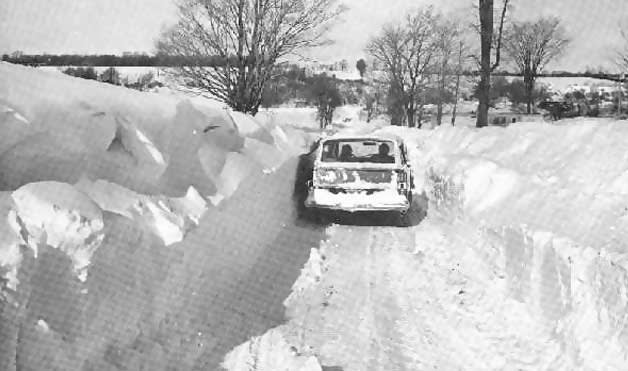Blizzard

What is it?
A blizzard is a severe weather condition characterized by low temperatures and strong winds bearing a great amount of snow, either falling or blowing. In order to qualify as a blizzard, winds have to be at least 35mph and rage for a longer period of time and at least 3 hours or more. There are two other classifications for blizzards,
- Severe blizzard : winds over 45mph, temperatures at -12 celcius or lower.
- Ground blizzard : no failing snow, snow from the ground is blown by the strong winds.
What causes blizzard?
The three most important things necessary to form a blizzard are a cold air, moisture, and a warm rising air. Sometimes, blizzard are created by strong winds picking up snow that already had fallen. Blizzards are usually formed when the jet stream pitches very far south. This allows the cold air that comes from the north to collide with warm air coming from the south. This creates a strong storm system, usually developing on the northwest side of such storm systems.Any area which is mostly flat is susceptible to blizzards, though there are some areas in the US, Australia, and the UK that suffer from blizzards more than others. However, the deadliest blizzard in recorded history occurred in Iran in 1972.
Effect of blizzard?
Blizzards can be a very dangerous for a number of reasons. Some of the blizzard winds can be as powerful and some can be even more powerful then hurricanes. For people, it is highly recommendable to stay in homes. Being out in a blizzard can lead to a freezing to death, hypothermia and frostbites.
How to survive a blizzard?
To avoid hypothermia during a blizzard, you should having a bottle of water because it can make a difference in extreme circumstances. People usually think eating snow can be as helpful as a bottle of water, but that is wrong. Eating cold snow reduce body temperature which can cause hypothermia.
Biggest Blizzards in the History:
Iran Blizzard

The deadliest blizzard on record happened in Iran in February 1972 when 4,000 lives were lost. The Iran Blizzard dropped more than 10 feet of snow and lasted for six days across the northern and central regions of the country. In southern Iran, however, the numbers were much more drastic. They received 26 feet of snow, and two towns had no survivors. The snow took out power lines, buried towns, and crushed transportation. People were left without food, water, heat, and medical supplies. When the storm finally stopped for a 24-hour period, rescue workers tried to retrieve survivors but were largely unsuccessful. The storms started again, and they were forced to abandon the mission and left behind bread for anybody who could dig their way out of the snow tombs.
That's all.
